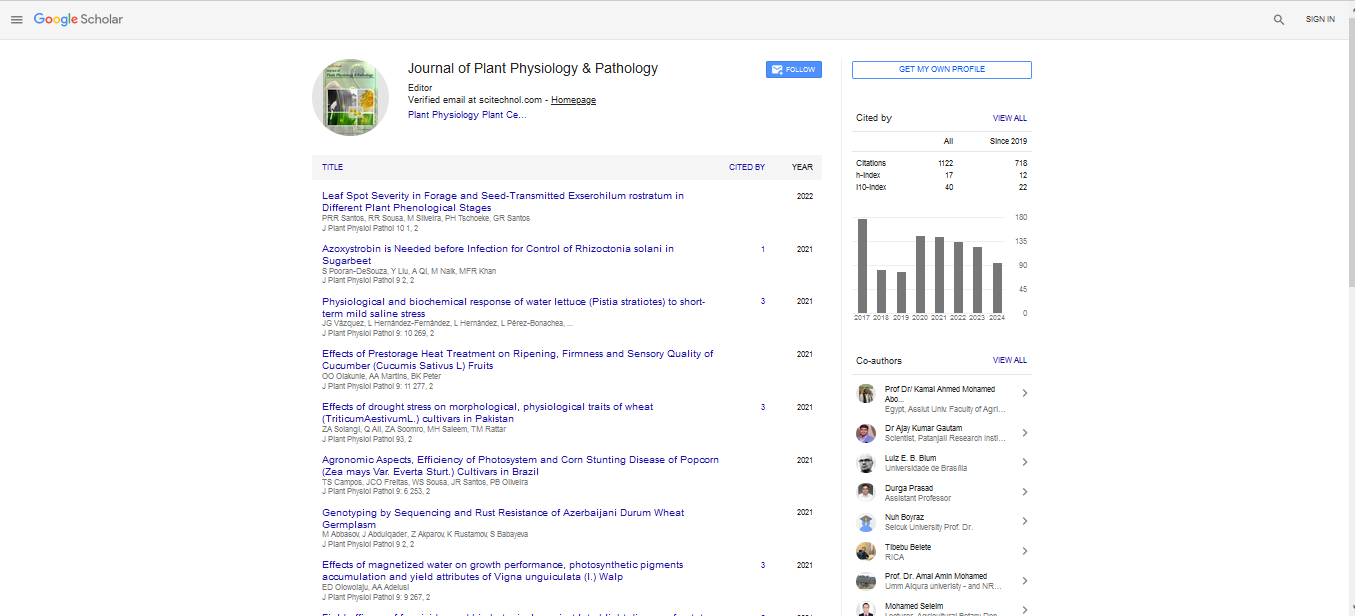Research Article, J Plant Physiol Pathol Vol: 8 Issue: 3
Regulation of Glutamine Synthetase (GS) Activity and Root Morphological Plasticity in the Nitrogen Fixing Azolla- Anabaena Symbiont under Nitrogen Limiting Conditions
Yusuf A1*, Aparna MB1 and Heimer YM2
1Interuniversity Centre for Plant Biotechnology, Department of Botany, University of Calicut, Thenhipalam 673635, Kerala, India
2Albert Katz Centre for Desert Agrobiologies, Ben Gurion University of the Negev, sede Boquer Campus, Israel
*Corresponding Author : Yusuf A
Interuniversity Centre for Plant Biotechnology, Department of Botany, University of Calicut, Thenhipalam 673635, Kerala, India
E-mail: akkara69@yahoo.co.in
Received: September 28, 2018 Accepted: October 20, 2018 Published: October 29, 2018
Citation: Yusuf A, Aparna MB, Heimer YM (2018) Regulation of Glutamine Synthetase (GS) Activity and Root Morphological Plasticity in the Nitrogen Fixing Azolla-Anabaena Symbiont under Nitrogen Limiting Conditions. J Plant Physiol Pathol 6:5. doi: 10.4172/2329-955X.1000191
Abstract
The present study was conducted to identify the role of the endosymbiont, Anabaena azollae in fixing atmospheric N2 in the Azolla-Anabaena symbiosis. The Azolla-Anabaena azollae (association) grown in nitrogen-free modified Hoagland’s medium supplemented with 10% (v/v) N2 using an artificial gas mix, resulted in the increase in root number and root length. The GS specific activity of the association was 75 ± 6 nmole γ-glutamate mg protein-1 min-1 and the total N content was lesser in cultures grown in 10% (v/v) N2. Similarly, the artificially produced Anabaena free Azolla (endophyte-free), developed increased root length, root number and reduced GS specific activity (30 ± 10 nmole γ-glutamate mg protein-1 min-1), which on supplementation with 2.5 mM NH4NO3 did not show any change in the root length, root number and GS activity. However, the association cultured in 10% (v/v) N2+2.5 mM NH4NO3, reversed the effect of 10% (v/v) N2 treatment exhibited a GS specific activity of 295 ± 120 nmole γ-glutamate mg protein-1 min-1 and the morphological features were similar to the control plants. The western blot analysis of the GS protein from the association showed two isoforms of GS (GS1 and GS2) of equal abundance under all growth conditions, whereas, one diffused band of intermediate size between GS1 and GS2 was observed in the endophyte-free fern.
 Spanish
Spanish  Chinese
Chinese  Russian
Russian  German
German  French
French  Japanese
Japanese  Portuguese
Portuguese  Hindi
Hindi 
